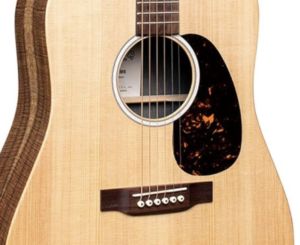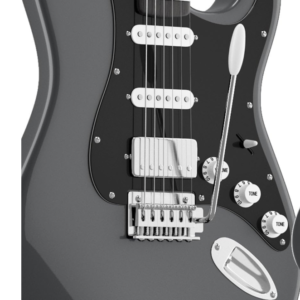Guitar players often use a variety of guitar expressions and phrases both in conversation about playing the guitar and while actually playing. Here are some common ones:
 Shredding: Shredding refers to a guitar playing technique characterized by playing fast, complex, and highly technical solos or riffs. It’s often associated with genres like rock and metal, where guitarists showcase their speed, accuracy, and dexterity. Shredding involves rapid sequences of notes, often incorporating techniques like alternate picking, sweep picking, and tapping to achieve the fast-paced, virtuosic sound.
Shredding: Shredding refers to a guitar playing technique characterized by playing fast, complex, and highly technical solos or riffs. It’s often associated with genres like rock and metal, where guitarists showcase their speed, accuracy, and dexterity. Shredding involves rapid sequences of notes, often incorporating techniques like alternate picking, sweep picking, and tapping to achieve the fast-paced, virtuosic sound.
Strumming: Strumming involves playing chords or individual notes on the guitar by sweeping the fingers or a pick across the strings in a downward or upward motion. It’s a fundamental technique used in various styles of music, including folk, pop, and rock. Strumming patterns can vary in complexity, ranging from simple downstrokes on basic chords to intricate rhythmic patterns incorporating both upstrokes and downstrokes.
Also Read:
Martin Guitar X Series D-X2E Guitar Review
Ibanez RGT1270PB Guitar Review
Best MIDI guitar on the market in 2024
Picking: Picking is the act of using a pick or fingers to pluck individual strings on the guitar. It’s one of the primary methods for producing sound on the instrument and is used for playing melodies, chords, and arpeggios. Guitarists can use a variety of picking techniques, including alternate picking (alternating between downstrokes and upstrokes), economy picking (minimizing motion for faster playing), and fingerstyle picking (using fingers instead of a pick).
Bending: Guitar bending involves increasing the tension on a guitar string by pushing or pulling it perpendicular to the fretboard, thereby altering the pitch of the note being played. Bends are commonly used to add expression, emotion, and dynamics to a melody or solo. Guitarists can perform various types of bends, including whole-step bends (raising the pitch by two frets), half-step bends (raising the pitch by one fret), and pre-bends (bending the string before picking it).
 Hammer-on: A hammer-on is a guitar technique where a note is played by quickly pressing a finger onto a fret without plucking the string with the picking hand. The force of the finger “hammering” onto the fret generates the sound, creating a smooth, legato effect. Hammer-ons are often used to create fluid, connected lines in solos and melodies, allowing guitarists to play fast passages with fewer picking motions. They are frequently combined with other techniques like pull-offs and slides to add complexity and variety to guitar playing.
Hammer-on: A hammer-on is a guitar technique where a note is played by quickly pressing a finger onto a fret without plucking the string with the picking hand. The force of the finger “hammering” onto the fret generates the sound, creating a smooth, legato effect. Hammer-ons are often used to create fluid, connected lines in solos and melodies, allowing guitarists to play fast passages with fewer picking motions. They are frequently combined with other techniques like pull-offs and slides to add complexity and variety to guitar playing.
Pull-off: A pull-off is a guitar technique where a note is played by removing a finger from a fret while maintaining the vibration of the string. To execute a pull-off, a guitarist first frets a note on a higher fret and then, without re-picking the string, quickly pulls the finger off the fretboard to produce a lower-pitched note. Pull-offs are commonly used in conjunction with hammer-ons to create fluid, legato lines in solos and melodies, allowing guitarists to play fast passages with minimal picking.
Slide: Sliding is a guitar technique where a guitarist moves a finger along the string to change the pitch of a note smoothly. To perform a slide, a guitarist frets a note and then shifts the finger along the string, either towards a higher or lower fret, without lifting it off the fretboard. Slides can be short or long, and they are used to add expression, fluidity, and ornamentation to melodies and solos, particularly in blues, rock, and slide guitar playing.
Tapping: Guitar tapping is a guitar technique where a guitarist uses one or more fingers of the picking hand to tap the fretboard to produce notes. To execute tapping, a guitarist typically holds a note or chord with the fretting hand and then taps the string with another finger of the picking hand, generating a sound without the need for traditional picking or plucking. Tapping is often used in lead guitar techniques, allowing guitarists to play rapid sequences of notes, arpeggios, and scales with great speed and precision.
 Palm muting: Palm muting is a guitar technique where a guitarist lightly rests the palm of the picking hand on the strings near the bridge to dampen their vibrations. This technique creates a percussive, muted sound, with the attack and sustain of the notes reduced. Palm muting is commonly used in rhythm guitar playing, particularly in genres like rock, metal, and punk, to add rhythmic emphasis, definition, and texture to strummed chords and single-note passages.
Palm muting: Palm muting is a guitar technique where a guitarist lightly rests the palm of the picking hand on the strings near the bridge to dampen their vibrations. This technique creates a percussive, muted sound, with the attack and sustain of the notes reduced. Palm muting is commonly used in rhythm guitar playing, particularly in genres like rock, metal, and punk, to add rhythmic emphasis, definition, and texture to strummed chords and single-note passages.
Bending the note: Bending a note is a guitar technique where a guitarist gradually increases the tension on a string to raise its pitch. To bend a note, a guitarist typically frets a note on a string and then applies pressure to the string, either by pushing it upwards or pulling it downwards, while maintaining contact with the fretboard. Bending notes is often used for expressive purposes, allowing guitarists to add emotion, intensity, and vibrato to their playing. It’s a common technique in lead guitar playing, used to embellish melodies, solos, and improvisations.
Whammy bar: A whammy bar, also known as a tremolo arm or vibrato arm, is a lever attached to the bridge of some electric guitars. It can be used to alter the pitch of notes or chords by changing the tension of the strings. When the whammy bar is pushed or pulled, it causes the bridge to pivot, which in turn changes the tension on the strings, resulting in a temporary change in pitch. Whammy bars are commonly used in genres like rock, metal, and surf music to create effects such as dive bombs, vibrato, and pitch bends.
Power chords: Power chords are simple chords consisting of just the root note and the fifth interval. They are played using two or three notes and lack the third interval found in traditional major or minor chords. Power chords have a strong, aggressive sound and are commonly used in rock, punk, and metal music due to their simplicity and versatility. They are often played on distorted electric guitars and provide a full, heavy sound that’s well-suited for driving rhythms and aggressive riffing.
 Open chords: Open chords are chords played using one or more open strings, meaning they are not fretted by the fingers. These chords are typically found in folk, country, and pop music and are characterized by their bright, open sound. Open chords are easy to play for beginners and provide a harmonic foundation for many songs. Examples of open chords include G major, C major, and D major, which incorporate open strings along with fretted notes.
Open chords: Open chords are chords played using one or more open strings, meaning they are not fretted by the fingers. These chords are typically found in folk, country, and pop music and are characterized by their bright, open sound. Open chords are easy to play for beginners and provide a harmonic foundation for many songs. Examples of open chords include G major, C major, and D major, which incorporate open strings along with fretted notes.
Barre chords: Barre chords are chords where one finger is used to press down multiple strings across the fretboard. The index finger is usually used to form a “bar” across all or some of the strings, while other fingers form the rest of the chord shape. Barre chords are movable shapes, meaning they can be shifted up and down the fretboard to play different chords. They are commonly used in a wide range of musical genres and allow guitarists to play chords in different keys and positions on the neck.
Tone: Tone refers to the overall sound quality of the guitar, influenced by factors such as the type of wood used in the construction of the instrument, the type of pickups installed, the amplifier and effects used, and the player’s technique. Tone can vary widely from guitar to guitar and player to player, and it plays a significant role in defining the sound of a musician’s playing. Guitarists often spend considerable time and effort refining their tone, experimenting with different equipment and settings to achieve their desired sound.
Feedback: Feedback is an unintended sound produced by the guitar, often caused by amplification and high volume. It occurs when the sound from the amplifier is picked up by the guitar’s pickups and re-amplified, creating a loop of sound that can result in a sustained, sometimes screeching noise. While feedback is typically undesirable and can be a nuisance in live performances, some musicians intentionally use it for creative effect, incorporating controlled feedback into their music to add texture, atmosphere, and intensity to their sound.
 Riff: A riff is a short, catchy musical phrase repeated throughout a song, often played on the guitar. Riffs serve as the main thematic and rhythmic elements of a song, providing a recognizable and memorable musical motif that helps define its character. Riffs are commonly found in genres like rock, blues, and funk, where they form the backbone of the music and are often repeated or varied throughout the song to create structure and cohesion.
Riff: A riff is a short, catchy musical phrase repeated throughout a song, often played on the guitar. Riffs serve as the main thematic and rhythmic elements of a song, providing a recognizable and memorable musical motif that helps define its character. Riffs are commonly found in genres like rock, blues, and funk, where they form the backbone of the music and are often repeated or varied throughout the song to create structure and cohesion.
Lick: A lick is a short melodic phrase or pattern, typically used as part of a solo or improvisation. Licks are often characterized by their rhythmic and melodic motifs, and they are commonly used by guitarists to add embellishment, ornamentation, and flair to their playing. Licks can be pre-composed or improvised on the spot, and they are often repeated or varied throughout a performance to enhance the musical expression and creativity of the guitarist.
Chord progression: A chord progression is a sequence of chords played in succession, forming the harmonic backbone of a song. Chord progressions provide the harmonic framework for melodies and lyrics, guiding the listener through different tonalities and emotions as the song unfolds. Common chord progressions include the I-IV-V progression found in many blues and rock songs, as well as the classic I-V-vi-IV progression used in countless pop and folk songs. Chord progressions can vary in complexity and length, but they play a fundamental role in shaping the structure and mood of a piece of music.
Dynamics: Dynamics refer to variations in volume and intensity while playing, adding expression and emotion to the music. Dynamics encompass a range of playing styles, from soft and quiet passages to loud and powerful sections, and they are an essential element of musical interpretation and performance. Guitarists can control dynamics through their technique, adjusting their picking strength, finger pressure, and use of amplification to achieve the desired volume and intensity levels. Dynamics play a crucial role in shaping the emotional impact and overall feel of a musical piece, helping to convey tension, release, and nuance to the listener.
